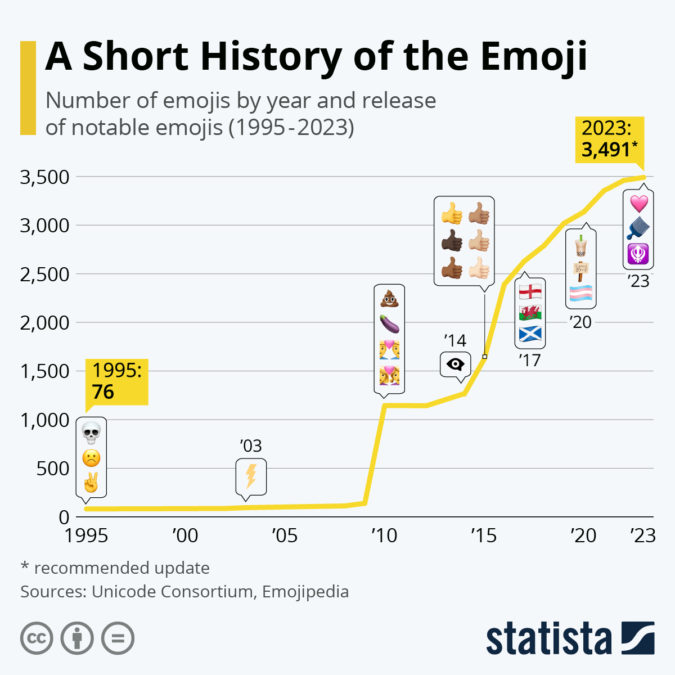In 2023, Global Emoji Count Could Grow To 3,491
Just in time for today’s World Emoji Day, new pictograms coming to phones in 2023 have been announced. As Statista’s Katharina Buchholz details below, next year will likely see the release of 31 new emojis including the pink heart, the hair pick and the Khanda, the symbol of Sikh faith. The update would grow the number of emojis to nearly 3,500 next year. The Unicode consortium has recommended the emojis for release, but a final decision is still outstanding.
You will find more infographics at Statista
While 2021 saw the release of 217 new emojis, that number was lowered to just more than 100 in 2022 and now finally to the double digits for next year. While emojis that allow users to pick different skin colors or genders drive up the size of releases as they are counted individually, the number of non-customizable emojis has also decreased with each release. 2023 will also see the addition of the moose head, the donkey, the goose, the handheld fan, the jelly fish and the maracas, among others, with the high-five hands – both left and right-facing – being the only customizable emoji in the new batch. The pink heart is reportedly the most anticipated of the release as social media users have griped for some time about the availability of the simple heart icon in white, orange and even brown, but not pink.
What emojis appear on people’s phones and on their social media platforms is not arbitrary but has been coordinated by the Unicode Consortium since 1995, when the first 76 pictograms were adapted by the U.S. nonprofit. The Consortium has been overseeing the character inventory of electronic text processing since 1991 and sets a standard for symbols, characters in different scripts and – last but not least – emojis, which are encoded uniformly across different platforms even though illustration styles may vary between providers.
Even though the first Unicode listings predate them, a 1999 set of 176 simple pictograms invented by interface designer Shigetaka Kurita for a Japanese phone operator is considered to be the precursor of modern-day emojis. The concept gained popularity in Japan and by 2010, Unicode rolled out a massive release of more than 1,000 emojis to get with the burgeoning trend – the rest is history.
Different skin colors have been available for emojis since 2015. 2014 saw the release of the anti-bullying emoji “eye in speech bubble” in cooperation with The Ad Council, which produces public service announcements in the United States. Regional flags came to the service in 2017. Same-sex couples and same-sex families have been available since the first major emoji-release in 2010. The 2021 release also included the rollout of non-binary options and interracial couples.
Tyler Durden
Sun, 07/17/2022 – 21:00

